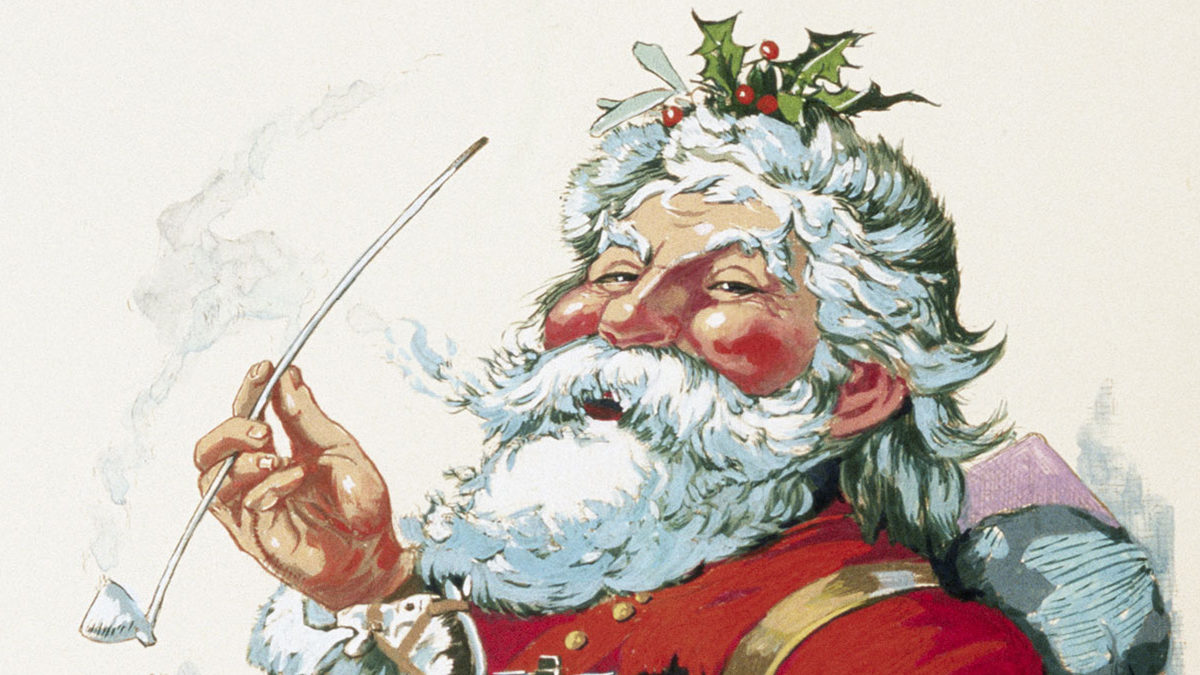Why Is Christmas Celebrated on December 25th?
The Gospels give little indication of Christ’s birth date. Other things the Gospels don't write of: the Magi being present at Jesus' birth, the innkeeper, angels singing to the shepherds, a barn, cave, or stable is not mentioned, and there was no "little drummer boy."
Early Christian scholars theorized many different dates for Jesus' birth, most either in the spring and winter. In the 4th century, Romans began celebrating His birth on December 25th, and the date soon spread throughout other parts of Europe. Many historians believe that Christians chose the date to coincide with the numerous pagan festivals taking place at the same time, such as Saturnalia and Sol Invictus. Others, including Pope Benedict XVI, argue that the date was arrived at by taking the traditional date of Christ’s death (March 25), assuming that it was also the date of His conception, and adding nine months. When Did Americans Begin Celebrating Christmas?
Christmas was not widely celebrated in early America. Most European settlers were Puritans, who did not believe the birth of Christ should be celebrated because His birth date was not given in the Bible. Furthermore, they believed that the celebration, particularly the more decadent aspects derived from pagan festivals, encouraged immoral behavior.
The celebration of Christmas was actually banned by the Puritan government in Massachusetts between 1659 and 1681. It remained unpopular through the American Revolution due to its association with English customs. It was not until the early 19th century that Christmas began to take hold in America, as authors such as Washington Irving and Charles Dickens redefined it as a peaceful, family holiday. What is the Origin of Santa Claus?
The earliest inspiration for Santa Claus is Saint Nicholas, the Bishop of Myra (part of present day Turkey) in the early 4th century, who was known for helping the poor and giving presents to needy children. In the Middle Ages, Christians celebrated his birthday, December 6, by leaving gifts for children in their shoes.
Santa Claus is also derived from Odin, a pagan god of Norse and Germanic origin. Odin had a long white beard and rode through the sky on an eight-legged horse to deliver gifts to good children on Yule, a mid-winter pagan celebration.
The Protestant Reformation discouraged celebrations for Saint Nicholas, but he remained popular in the Netherlands, where he was known as Sinterklass. Dutch immigrants in New York celebrated Sinterklass in the late 18th century. In 1809, Washington Irving spread the legend and added new details, writing that St. Nicholas flew through the air in a wagon delivering presents in stockings hung by the chimney.
Many of the details of our modern Santa Claus derived from the poem “A Visit From St. Nicholas,” published in the Troy (N.Y.) Sentinel on December 23, 1823. Also known as “’Twas the Night Before Christmas” (which we are all more familiar with), the poem describes Santa as a plump, cheery man who travels in a sleigh pulled by eight reindeer and enters homes through the chimney to deliver toys from his bundle.
Do you see how that eight-legged horse, from the Germanic origin, became eight reindeer from "'Twas the Night Before Christmas?"
Thomas Nast, Merry Old Santa Claus, 1881. Wikimedia Commons.
The modern image of Santa Claus was created by Harper’s Weekly cartoonist Thomas Nast, who sketched Santa in a series of 32 cartoons between 1863 and 1886. Nast, whose depiction of Santa Claus derived from the poem, “A Visit From St. Nicholas” (“’Twas the Night Before Christmas”) and his German heritage, may also have invented the idea that Santa lives in the North Pole.
The Santa Claus legend was boosted in 1897, when the New York Sun published an editorial in response to 8-year-old Virginia O’Hanlon, who asked if Santa Claus existed. Penned by Francis Pharcellus Church, the editorial responded, “Yes, Virginia, there is a Santa Claus. He exists as certainly as love and generosity and devotion exist, and you know that they abound and give to your life its highest beauty and joy. Alas! how dreary would be the world if there were no Santa Claus.” And to that I say, "Alas! how dreary would be the world if there were no Savior?” Marketers in the 20th century used Santa Claus in promotions, greatly expanding his popularity (and their profits). The most famous marketing campaigns were produced by Coca-Cola, which beginning in 1931 began featuring its own variations of Nast’s Santa Claus. Having trouble explaining Santa Claus to your child? Be sure to checkout our Explaining Santa Claus to Your Kids post. Plus, there's a beautiful printable there! What is the Origin of the Christmas Tree?
Trees and other plants, such as holly and mistletoe, were used in pagan mid-winter celebrations. “Since pagan times evergreens have been valued for their ability to retain signs of life in the middle of winter... Early Christians displayed evergreen plants in the home to symbolise everlasting life,” explains the BBC.
Everlasting life... imagine that! Want to know how you can have everlasting life? Checkout our Explore Christianity post. The custom of decorating trees for Christmas is believed to have originated in 14th and 15th century Germany, though the first written record of a decorated tree is found in 1510 in Riga, Latvia. Germans brought “paradise trees,” which symbolized the Garden of Eden in plays about Adam and Eve, into their homes on December 24, and decorated them with wafers. They later began to add other cookies and candles, and the practice became widespread in 17th and 18th century. Interesting how many of these customs or traditions originated in Germany, and how many of them have Christianity or biblical references woven into them, like everlasting life, or the Garden of Eden and Adam and Eve, and a tree named paradise. There's another tree that promises paradise for all who believe on the Son of God. I just find all of this so very interesting.
The British began to adopt the custom of the Christmas tree in the late 18th century. It was popularized by Prince Albert, the German husband of Queen Victoria, who decorated a tree in the royal household beginning in the 1840s.
Americans were slow to embrace the custom though. It wasn’t until the 1890s that it began to spread outside of German immigrant communities. American trees were larger than the typical German tree, which measured about four feet, and were decorated with brightly colored ornaments rather than cookies and nuts. “Electricity brought about Christmas lights, making it possible for Christmas trees to glow for days on end.... With this, Christmas trees began to appear in town squares across the country and having a Christmas tree in the home became an American tradition.” --History.com Beginning the 1923, the White House began its tradition of decorating a tree on the White House lawn. The first Christmas tree was erected in New York’s Rockefeller Center in 1931, and the first tree-lighting ceremony was held two years later.
The date December 25th, the holiday becoming popular in various parts of the world at different times, the long-standing traditions of Santa Claus and the Christmas tree, each of these, even though much about them is secular in nature and some derives from the pagan, lead us back to the real reason for the season.
Did any of this information from our Christmas Q & A surprise you? I think what surprised me most was how many of our traditions originated from German or pagan customs, and how often Christianity or biblical references were woven in.
4 Comments
12/14/2019 11:57:10 am
Yes, the 19th century here in America <— I feel like that was the beginning a materialism, fueled by department stores and toy stores, and it's really when they started telling us what we needed.
Reply
12/17/2019 02:53:19 pm
Patsy,
Reply
2/5/2024 01:32:19 pm
I'm thrilled to read that you enjoyed the history of Christmas and the traditions shared, Bev!! Christmas trivia sounds like a delightful activity, especially with children at your crossing guard station. Wishing you a joyful and blessed Christmas season and Christmas blessings to you as well!
Reply
Your comment will be posted after it is approved.
Leave a Reply. |
Hi friend, welcome to InstaEncouragements. I am so glad you are here. You’re among friends. You belong here.
How would you like access to our online library of helpful eBooks, devotionals, printables, lock screens, and more? You’re going to love this library, there is all kinds of exclusive content, just for you! Join the movement by signing up below and I'll send you the link today. And no worries, We don’t spam. Promise! We don’t like spam either. After you've joined the movement, hop on over to our about page to learn more about us and then to our contact form and introduce yourself so we can be on a first-name basis. I'd like that! Top PostsFeaturedCategories
All
Archives
July 2024
|
means for this site to earn fees by linking to Amazon.com and affiliated sites. This site also contains affiliate links for The Daily Grace Company,.
InstaEncouragements will be compensated if you make a purchase after clicking one of these links or a link from one of our posts.













